A Piece of Cornwall’s History in Camborne
From Parochial School to
All Saints Church Community Centre
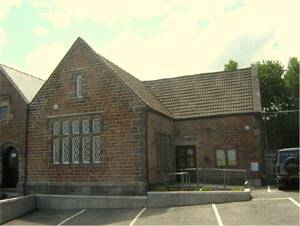
Built in beautiful red sandstone with fine feature windows and inner beams, this Grade II listed building is one of Tuckingmill’s best. Dating from 1845, it has a long history of working with the community.
Originally built from funds raised by local miners and the famous Basset family, it was used as the Parochial School, providing education for the children of the parish and was used up until the changes in the education system, when a new school was built for the community at Roskear.

Most of the children’s fathers would have worked in the local tin mines at that time, as this area was the world’s main source of high-grade tin. There was employment for all, but conditions were hard, and life expectancy was short for many of the miners, as they suffered from adverse medical conditions and injuries due to mining.
Tuckingmill, which has an identity all its own, lies sandwiched between Camborne and Redruth and was once a prosperous area. South Crofty, the last working tin mine in the world, provided the major source of employment for the area and its closure in 1998 came as a big blow to the local community. The industrial wealth of the area has all but gone with the closure of the mines, the gas works and the ICI fuse factory. The only large employer left was the Compair Holman Engineering works. However, its workforce dwindled from five thousand to less than three hundred before finally closing in 2002.
The Church took over the old school building and used it as a church hall until 1998. During this period, various activities such as Scouts, Beavers, Youth Club, Cycle Club, Table Tennis Club, Sunday School and meetings, serving both the church and the community, took place. Responsibility for the upkeep of the building remained with the Church, through the PCC, but due to rising costs in upkeep over the years, the building fell into disrepair, forcing it to close. As the Church did not have the necessary funds to carry out the major refurbishment required, the then vicar, Rev’d. Adrian Stringer, decided to enter into a joint venture with the community to establish a community resource where everyone could be involved and ultimately have access to excellent facilities.

The Community Centre, refurbished with money from The National Lottery, was officially opened as a Community Centre in 2000.
The work of the Centre only became fully operational with the appointment of a Community Development Co-ordinator, Treve James, in March 2002. Since that time, the Centre has become very active and successful and continues to serve the community.
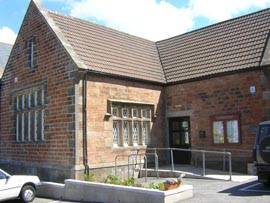
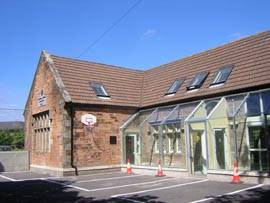
In recognition of the outstanding work that has been achieved at All Saints, Prince Edward, The Earl of Wessex, visited the Centre 15th April 2004. He officially opened the new enhanced facilities funded by the Millennium Commission and met the Centre’s many groups from both the statutory and voluntary sector.
Prince Edward’s visit to the Centre. He was very impressed with the diversity of groups using the Centre and spent a long time talking to group representatives.

In July 2004, All Saints was awarded The Queen’s Golden Jubilee Award for Voluntary Service by Groups in the Community. This was a great honour for the Centre and for all those connected with its many achievements over the first few years.
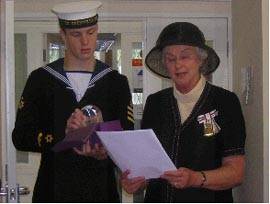
Lady Mary Holborow, Lord Lieutenant of Cornwall, presented the Centre with The Queen’s Golden Jubilee Award for Voluntary Service by Groups in the Community.
The Centre received plaques from the Chairman of Kerrier District Council and The Mayor of Camborne in recognition of the work carried out by the Centre and its volunteers. In May 2006, the Centre received Objective One funding to help it to continue its good work in the community.

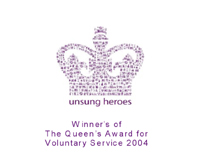
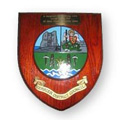

Repointing of the Centre in May 2006 by J & E Regan funded by The Cornwall Infrastructure Partnership

In 2012, the old Marley roof tiles were replaced with traditional Cornish slate under the Town Heritage Initiative. The funding for this was provided by HRH Duke of Cornwall, SITA, The Church & Community Fund London, Cornwall Council and Councillor Jon Stoneman. The final phase of refurbishment in 2012 was the repointing of the boundary wall using traditional lime mortar under the Town Heritage Initiative. Cornwall Council, Cory Environmental Trust, Councillor Jude Robinson and Councillor Jon Stoneman provided the funding for this work.

The final phase of the Centre’s refurbishment – a new roof as part of the Town Heritage Initiative on historical buildings.
In December 2015, after many years of dedicated service to the Centre, Treve James MBE (Community Development Co-ordinator) and his wife, Gill (Centre Administrator) retired. Many of the people who have been involved with the Centre attended their retirement party and gave them a good send off.

2016 – A New Chapter
The Centre welcomed two new members of staff. Bev Price as the Centre and Project Manager and Helen Phillips as the Centre Administrator. They have been made to feel very welcome by all the Centre users and volunteers, as well as the Board of Trustees.
30 September 2016, The Centre welcomed back Treve and Gill to mark the retirement of the cafe volunteers, who, after many years of faithful service, decided to hang up their aprons.
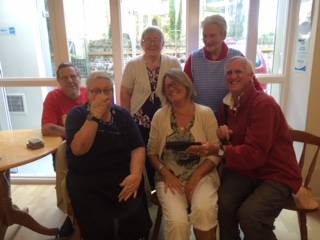
Cafe volunteers, Ann, Mavis and Dee pictured with Gill and Treve (also pictured, Centre volunteer, Dave).
A huge thank you to Ann, Mavis and Dee for all their hard work over the years. Each was presented with flowers and a photograph during the final cafe session, which was attended by many of their regular customers. It was a morning of mixed emotions – lots of tears and laughter – but a fitting send-off for such a good team.